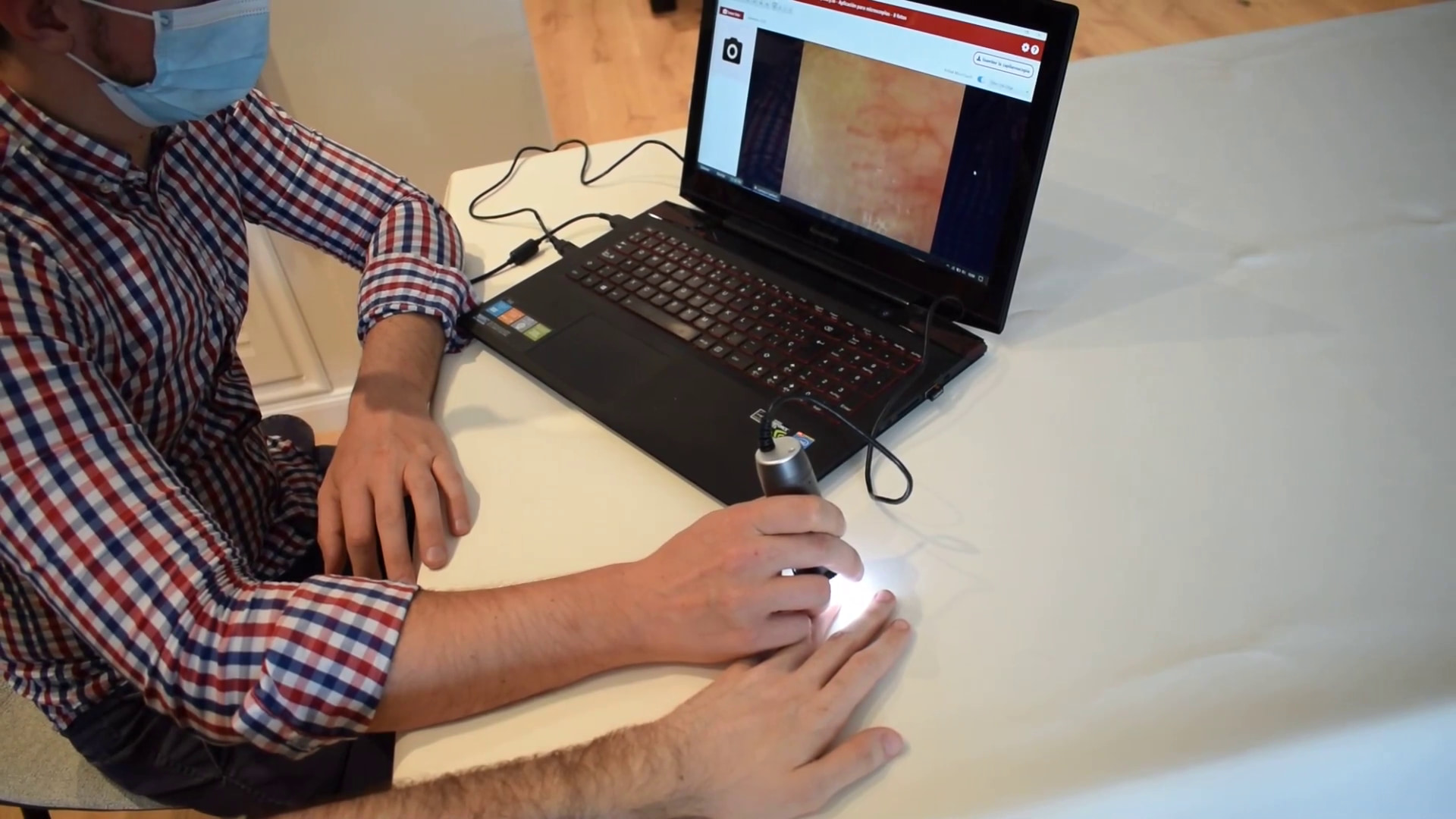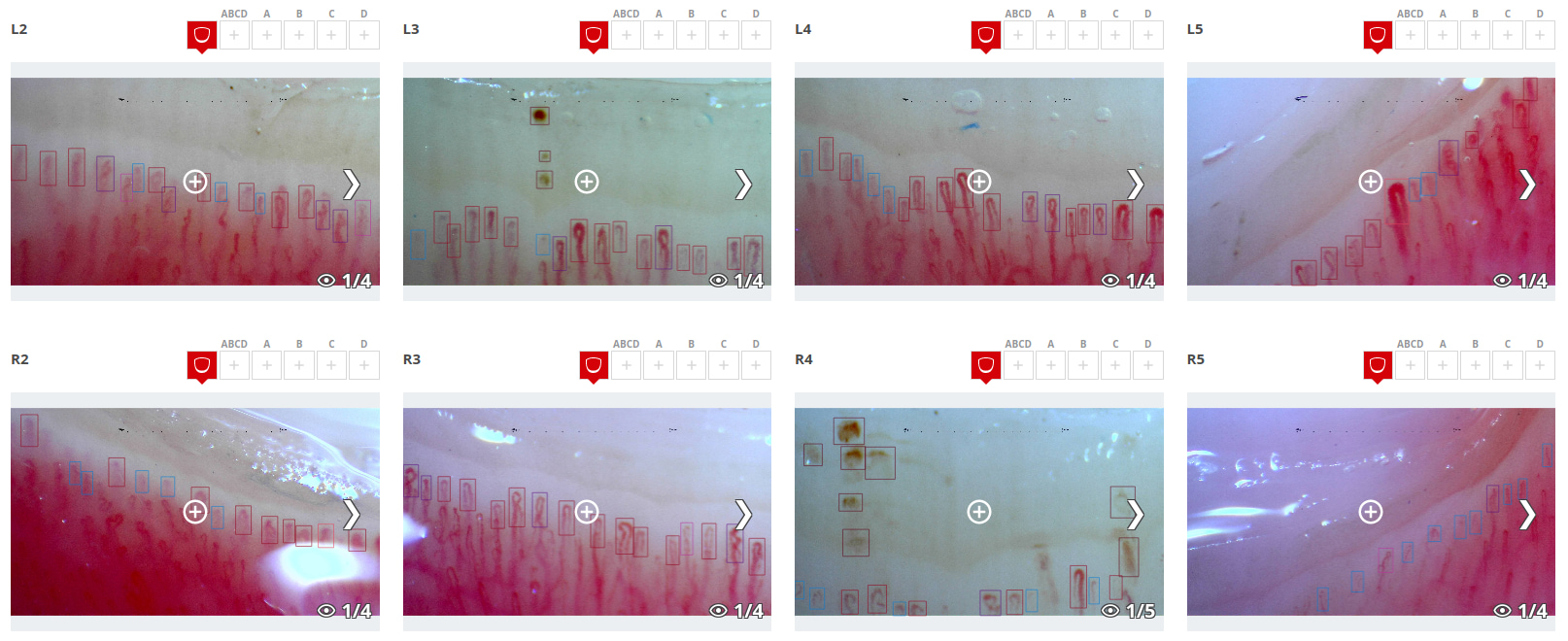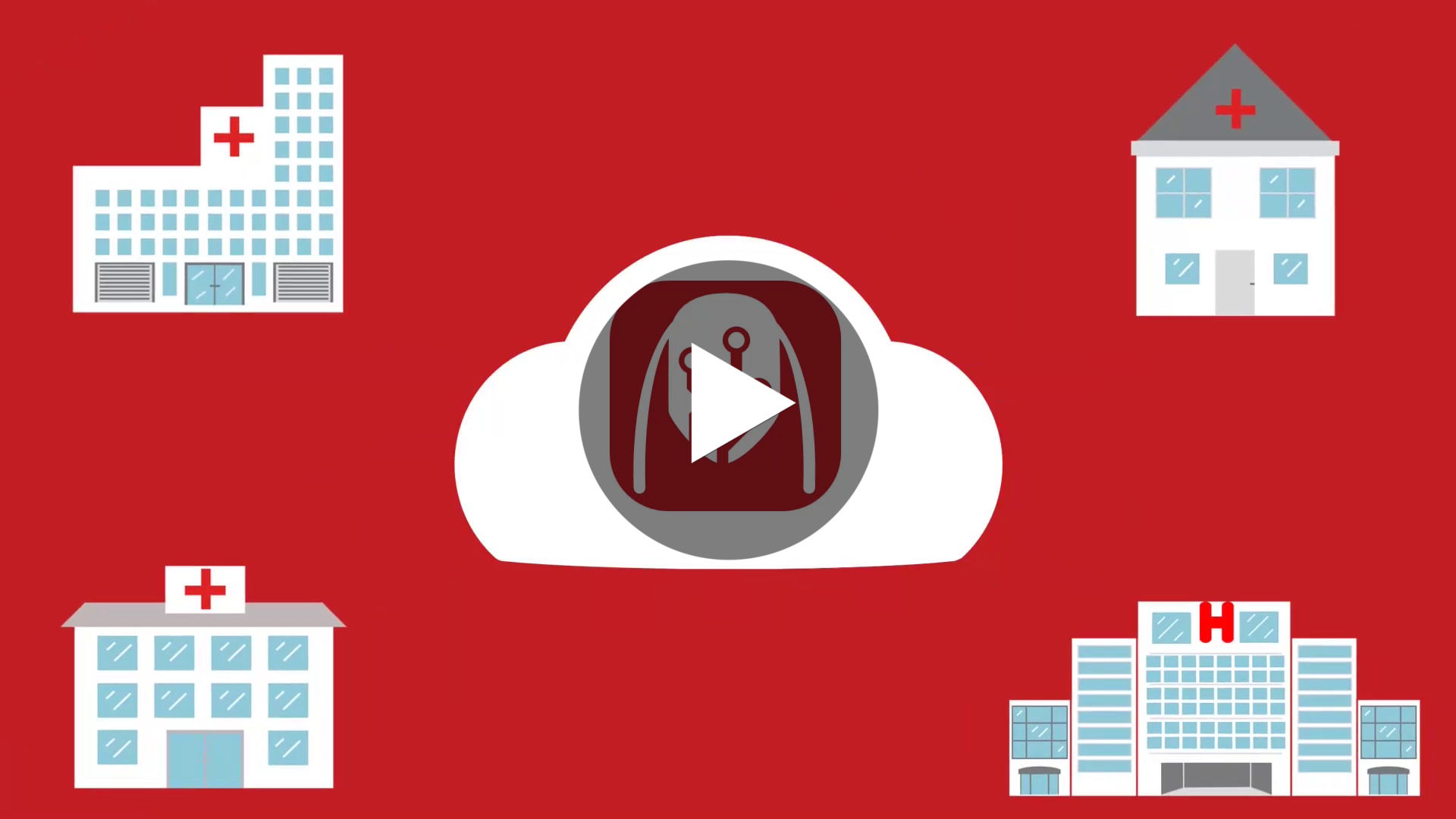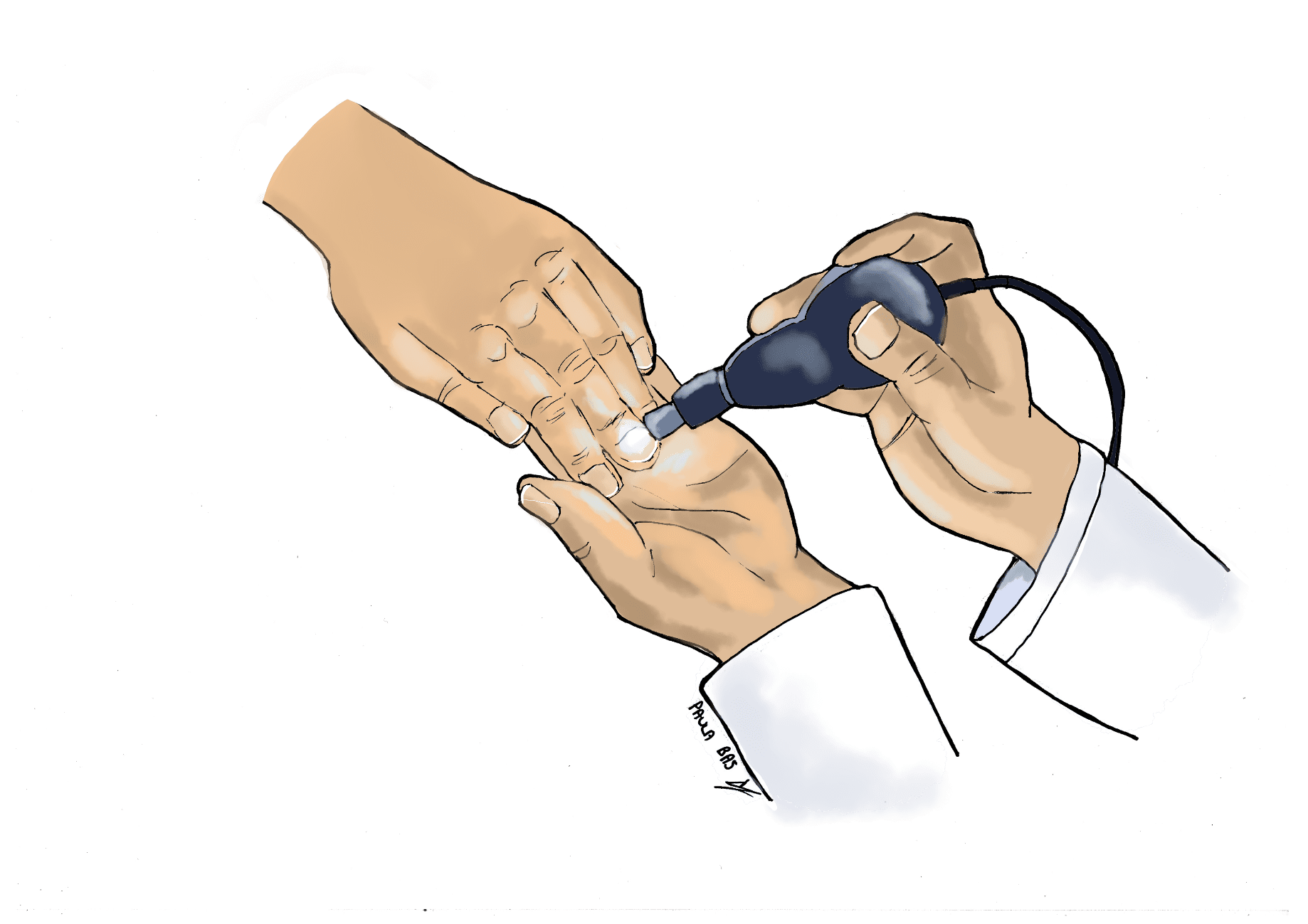Introduction
In daily practice, healthcare practitioners tend to have their own particular methods of performing nailfold capillaroscopy (NFC). The methods that are used may be working well, but there’s always room for improvement. One of the ways that physicians can improve their methodology is by finding ways to save time while performing nailfold capillaroscopy.
We will discuss in-depth how physicians can save time during this procedure, but let’s understand NFC first.
Addressing misconceptions pertaining to NFC, will allow us to introduce a more modern approach, and a valuable tool for nailfold capillaroscopy.
Re-visiting NFC pertaining to diagnosing issues involving microvascular changes
Here is what healthcare practitioners need to be aware of relating to NFC:
- NFC is inherently a manual process. This is irrespective of the number of procedures you have performed or the experience that you’ve accumulated. As a result, you’ll need to spend time examining and diagnosing patients.
- Capillaroscopy has been around for centuries, and has evolved with time. This evolution happened as we learned more about vascular as well as autoimmune diseases like Raynaud’s Phenomenon. Over the years, tremendous progress has been made in how micro-circular and vascular tissues are characterized, relevant to disease states related to clinical practice.
- There are certain parameters that physicians measure when performing video capillaroscopy in the general population. Examples of this include: the number of capillary loops per mm (capillary density), number and presence of giant capillaries, presence of avascular areas or devascularization and presence of micro-hemorrhages. Also included in this list is the presence of capillary abnormalities, such as a loss of capillaries, tortuous or branched capillaries (ramifications). There is also a need to include grading for better assessment when it comes to potential diseases, as well as monitoring patients over time.
Building medical narratives of patient presentations using NFC as a tool
Let’s move into the steps involved in the nailfold examination in order to better understand how time can be saved:
- The physician will first need to explain the procedure to the patient.
- The patient will need to get acclimatized to the room temperature for at least fifteen to twenty minutes.
- The patient’s skin is cleaned with soap and water.
- A drop of immersion oil will then be applied to the nailfold, which will then be carefully observed under a microscope or capillaroscope.
- Four to five overlapping images will be taken of the fingers on both hands.

Capillary parameters and diagnostic criteria
Although, a physical examination is a necessary component of the work, here is a high-level review of what you should know about capillary parameters when looking for capillary abnormalities and monitoring early stage disease:
- Capillary Shape: Normal capillaries look like an inverted U; they have arterial as well as venous limbs. Morphological variations may also be present in the form of crossed or meandering loops that are intertwined. Diseases such as scleroderma, undifferentiated connective tissue disease, and dermatomyositis may exhibit tortuous capillaries that are excessive.
- Capillary Density (CD): The capillary density is the number of capillaries situated in 1 mm length of the distal row situated on each finger. The normal measurement of capillary density is 7-12 capillaries per mm. The average capillary density is about 9 capillaries per mm. Capillary density is measured for each finger, and the mean figure is calculated from four fields.
- Capillary Width: Capillary width is not usually measured. Instead, the apical diameter tends to be measured. A normal range apical diameter can go up to around 20 µm to 25 µm at most. An apical diameter greater than 20 µm is considered enlarged. Should the apical diameter be greater than 50 µm, then it is considered a giant capillary or megacapillary.
- Inter-capillary Distance: The distance between the apical tips of two capillaries is its inter-capillary distance. The inter-capillary distance is usually between 96 and 166 µm.
- Micro-hemorrhages: Micro-hemorrhages are punctate lesions located on the nail bed. These tend to be reddish-brown, representing that the patient is at high risk, or that there are early signs of vascular damage.
Nailfold videocapillaroscopy has a central role in detecting capillary alterations of the blood vessels. And healthcare practitioners take time to perform the procedure. The time taken will usually depend on the experience the physician has. Other factors to consider are the patient themselves as well as how complex the case is. As previously stated, this procedure is highly manual at the current time. We will next gain a better understanding of the steps involved while performing nailfold capillaroscopy and how these steps can be reduced, thus saving time.
We will also discuss the important advantages that a practitioner can gain from using tools that are now available to the medical community. The tool that we will be discussing was developed by a physician, as well as an expert in the field of Information Technology. A collaboration related to the intersection of healthcare as well as technology is a new path forward in the field of medicine.
Why does it take so much time to perform nailfold capillaroscopy?
In an earlier post on our blog, we discussed how to perform a capillaroscopy. The article is a concise review of the types of capillaroscopy devices and what to look for when performing capillaroscopy.
Let’s first look at what isn’t working for healthcare providers:
- There seems to be a lack of consistency when it comes to performing the procedure. Methods related to taking images, as well as counting and measurement, tend to differ from one healthcare provider to another.
- A great deal of time is required to take capillary measurements, which seems unpractical and subjective.
- The possibility of human error exists, when it comes to detecting changes in the nailfold.
How can we improve the nailfold capillaroscopy process?
This is what we can do to improve the nail fold capillaroscopy process:
Step one
Automated software can be used to count the nail fold capillaries with high precision. Automated software can be used to classify capillaries as well as hemorrhagic changes by their morphologies as well as size.
Step two
With automated software, nailfold capillaries can be examined with high precision, while decreasing the time and effort required to perform the examination.
Step three
Images can be stored, and reports can be generated for future reference.

Investigating a tool that is useful for medical procedures
A tool like Capillary.io, developed by an internal medicine physician, and a technical expert can be useful for NFC procedures. Capillary.io is used to train AI algorithms to detect, measure and quantify the characteristics of an NFC. This leads to improved quality, assessment and monitoring of patients.
Capillary.io provides robust reporting features that aid in generating reports for analysis. These reports can then be attached to the chart of the patient. Consider the CapillaryScope as well, which is a free desktop application from Capillary.io that’s similar to software like Dino-Lite’s Dino Capture, but specific to nailfold capillaroscopy and compatible with any USB capillaroscope device.
Other examples would be DinoXcope as well as OptiPix, as discussed in this article, which provides a breakdown of the various types of capillaroscopes. The CapillaryScope software from Capillary.io is designed specially for nailfold capillaroscopy, using USB microscopes and integrating into the capillaroscopy data pipeline directly.
Ease of use
The Capillary.io application is designed to be simple to use. It augments a physician’s task of taking pictures of capillaries. Characteristics of the finger and nail sector of each photo can be indicated as well. Further, it makes sense to preserve the data, situated in the image file metadata. This way, the data is never lost, even if you end up renaming the file.
The magnification level is also saved, as well as the capillary physical distance information. This is saved in the image metadata itself, enabling other applications to read it easily.
The physical distance information is considered very important when it comes to examining and measuring capillaries. This information is crucial for the nailfold capillaroscopy process. The CapillaryScope application from Capillary.io allows you to upload the photos taken to our website with just one click. You can also save them to your computer for later use.
Should you upload photos to our website, then we will safely store them for you. We will also perform automatic analysis of the nailfold capillaries, such as detection, measurement and classification of capillaries as well as hemorrhages.
Uploading photos to Capillary.io using our CapillaryScope software
CapillaryScope automation reads magnification as well as physical distance information. But it does this for Smart G-Scope and Dino-Lite microscopes only. You can, however, calibrate other USB cameras manually. Alternatively, you can make use of our bundled calibrations for common cameras, for example, Optilia Digital Capillaroscope.
Saving Time
First and foremost, we would like to say that it’s possible to reduce a capillaroscopy procedure of twenty minutes down to five or six minutes. This gives the physician more quality time with the patient, which can lead to improved patient compliance. Physicians can also enjoy greater accuracy as well as standardization of the procedure. Images can also be stored as well as compared for effortless collaboration between colleagues.
Secondly, it’s also possible to reduce human error with the help of a system that acts as a guide while performing the procedure.
Thirdly, detailed metrics can be obtained from just one visit. Capillary.io allows you to capture relevant information, measure them, and then learn from the results. The built-in functionality of the software can enable new insights to emerge.
Detailed metrics, as well as insights, would take more than an hour for a physician to normally do. This is one of the benefits that come with using this tool. Software automation is also widely being used in various fields as a result of technological advancements. Healthcare is a field that can also benefit from these advancements. Together, the combined expertise of a physician, as well as the tools that they use, can enable the quality of care in the healthcare industry to improve.

Final takeaways
Capillary.io is a software application that augments patient care. You can save time and also keep everything in the same place. The features of the software allow you to upload images as well as create reference libraries for insights. Manual procedures like this end up taking a lot of time. Manual steps during this procedure can be greatly reduced.
Mainly, the benefit with adopting a tool like this, is that you can save countless hours. This is quality time that could be used for spending more time with patients. Physicians can also glean insights from the data managed by the system. Data is a large topic that can be complicated, and this system packages data in a way that is intuitive.
Physicians can look at Capillary.io as a data management tool that provides you with insights on images using deep learning. This allows you to make informed and well-thought-out decisions.

